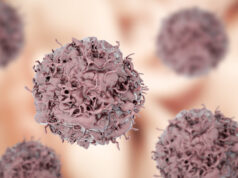
Women aren’t adequately represented in health research even though they make up more than half of the population. In fact, it wasn’t until 1993 that women were required to be included in clinical research in the U.S.
That’s why women’s health executives and advocates are applauding First Lady Jill Biden’s recent announcement of a $100 million investment into women’s health research.
“This is significant because women’s health has traditionally been understudied and underfunded,” said Michael Annichine, CEO of Magee-Womens Research Institute and Foundation, in an email. “This investment represents an opportunity to catch up and learn more about how we can positively impact women of today, and also future generations.”
Some feel that for the first time, money is going towards women’s health issues outside of fertility and pregnancy. Others, however, were disappointed that conditions like autoimmune disease and sexually transmitted diseases were left out.
Where will the money go?
The funding is through a program called Sprint for Women’s Health organized by the Advanced Research Projects Agency for Health (ARPA-H). ARPA-H is a research funding agency for health breakthroughs that was created by President Joe Biden.
Last week, ARPA-H announced the six areas it is seeking funding submissions:
- Women’s Health at Home
- Preserving Ovarian Health Past Reproductive Age
- ARTEMIS – Advancing Research Through Enhanced Models for Investigating Sex Differences
- Modulating Women’s Brain Health Via Lymphatic Targeting
- Objective and Quantitative Measurement of Chronic Pain in Women
- Wild Card: Revolutionary Breakthroughs in Women’s Health
With the funding, Jill Biden said in her announcement that the White House is “going to invest in your discoveries early, when private companies may not be willing to take the risk. We are going to give women’s health researchers and startups the funding they need to grow and help them bring ideas to market – and to the women who need them most.”
There are two tracks that submitters can apply for: Spark and Launchpad. The Spark track is for “transformative, early-stage research and development efforts,” according to an ARPA-H webinar held Wednesday. Under this track, solutions can receive $3 million in funding. The Launchpad track is for “transformative, later-stage research and development efforts/early-stage startups,” and solutions can receive $10 million in funding.
ARPA-H does not have a defined number of awards that it will offer, according to the webinar.
Submissions for funding open on March 13 and close on April 12. Awards will ultimately be issued in September of 2024.
What are women’s health advocates saying?
Overwhelmingly, women’s health executives are saying that this funding and attention on women’s health is much needed.
“I’ve been in healthcare for 15-20 years. This is really the first time in my entire career that I’ve actually seen women’s health on the map in terms of not just innovative companies putting out apps or platforms or new types of clinics … but really the administration taking an active role in shaping policy,” said Anu Sharma, founder and CEO of maternal health company Millie, in an interview.
Priyanka Jain, co-founder and CEO of Evvy, echoed Sharma’s comments. She was particularly excited to see that the topics for funding are not solely about fertility and pregnancy.
“I just think that so often in women’s health, our ability to reproduce is what we get reduced to,” she said in an interview. “It’s exciting to see things like brain health and ovarian health that have much more to do with our quality of life and our healthspan, not just our lifespan or just our ability to have kids.”
She added that as CEO of an at-home vaginal microbiome testing startup, she was glad to see a section about women’s health at home and said Evvy will be applying for funding within that section. Home-based care allows patients to receive support without taking time away from work and their lives, and ultimately makes healthcare more accessible, she said. Sharma was also happy that home health was chosen for funding since the majority of maternal mortality events happen at home.
Ellen Rudolph, CEO and co-founder of WellTheory, said the six areas laid out for funding set “a strong foundation for a more comprehensive plan of attack on women’s health R&D.”
However, she believes some key areas were left out. As an autoimmune patient and executive of a company that treats autoimmune conditions — which primarily affect women — she would have liked to see autoimmune conditions be a larger focus. However, she noted that she’s excited there will be an investment in autoimmune neurological conditions like Multiple Sclerosis under the brain health section.
“I’m still hopeful that perhaps the ‘wild card’ category will allow a small space for advancements in broader autoimmune treatment to flourish, but $100M divided into six broad categories and hundreds of stones left unturned, it’s unlikely that we’ll see direct innovation on the [autoimmune disease] front from this,” she said in an email.
Another women’s health exec — Monica Cepak, interim CEO of sexual health company Wisp — noted some gaps on the list. She said that major concerns for Wisp patients are abortion and sexually transmitted infections/diseases, which weren’t included in the funding. She added that while STIs/STDs don’t solely affect women, “the way we treat and cure could and possibly should be sex-specific.” However, Cepak was glad to see a focus on preserving ovarian health past reproductive age because it affects all women at some point in their lives.
While some believe there are shortcomings with the funding, Annichine of the Magee-Womens Research Institute and Foundation said that the areas chosen for funding “illustrate the need for holistic solutions in care models, research, and an invigorated focus on wellness and prevention.”
Photo: asnidamarwani, Getty Images







